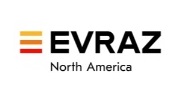Steel Products Prices North America

2014 Steel Imports Outpace Declining Exports
Written by Sandy Williams
December 13, 2014
Steel exports have declined by 6.5 percent this year while steel imports have climbed nearly 37 percent, notes the American Institute for International Steel in their Statement on October 2014 Steel Exports published below.
Falls Church, VA. December 12, 2014. Steel exports dipped from September to October and fell nearly 11 percent from a year earlier.
Exports fell 2.3 percent month-to-month, and were 10.9 percent lower than they were in October 2013. The two major buyers of American steel – Canada and Mexico – both reduced their purchases in October, the former by 3.8 percent to 537,003 net tons, the latter by 1.2 percent to 348,804 net tons. Both marked double-digit decreases from the previous October. Exports to the European Union, however, increased by nearly 50 percent from September to 35,238 net tons, 28 percent more than a year earlier.
For the first 10 months of the year, exports were down 6.5 percent to 10,161,879 net tons. Exports to Canada, which represent more than half of the total, decreased 5.2 percent, while exports to Mexico, which account for more than one-third of the overall number, increased 1.5 percent. Notwithstanding the gains in October, exports to the E.U. are down 11.6 percent on the year. Year-to-date exports to nearly all of the United States’s’ minor trading partners have decreased significantly compared to 2013, with one notable exception being Venezuela, where exports have increased more than 88 percent to 53,972 net tons.
The decrease in exports in 2014 contrasts with a substantial increase in imports, which are up nearly 37 percent this year. There are several factors contributing to these two trends, including a U.S. economy that appears to be growing stronger while much of the rest of the world continues to struggle, massive exports from China, and the advantage that steel producers in many other countries have over domestic companies when competing on price. Such is the nature of a global market. The sale of steel – or any other commodity– is not a zero-sum game, however. Free trade is an economic force-multiplier that can shift the demand curve and benefit all producers, especially the most efficient ones.

Sandy Williams
Read more from Sandy WilliamsLatest in Steel Products Prices North America

Nucor slows HRC price climb with $5/ton increase
After eight weeks of double-digit price increases on hot-rolled (HR) coil, Nucor slowed the price rise this week with an increase of $5 per short ton.

Domestic CRC prices surge ahead of imports
The price spread between stateside-produced CR and imports reached its widest margin in over a year.

Evraz raises plate prices $160/ton
Evraz North America (NA) has followed Nucor and SSAB with a plate price increase of its own: up $160 per short ton (st). The increase was effective immediately for all new orders of carbon, high-strength low-alloy, and normalized and quenched-and-tempered plate products, as well as for hot-rolled coil, the steelmaker said in a letter to […]

Nucor lifts HR coil to $820/ton
Nucor has increased its consumer spot price (CSP) for hot-rolled (HR) coil for a fourth consecutive week.

Nucor pushes HR spot price to $790/ton
Nucor increased its consumer spot price (CSP) for hot-rolled (HR) coil to $790 per short ton (st) on Monday, Feb. 10 – a $15/st bump vs. last week. The Charlotte, N.C.-based company has raised its weekly CSP by $40/st over the past three weeks after maintaining tags at $750/st since Nov. 12, according to SMU’s […]
